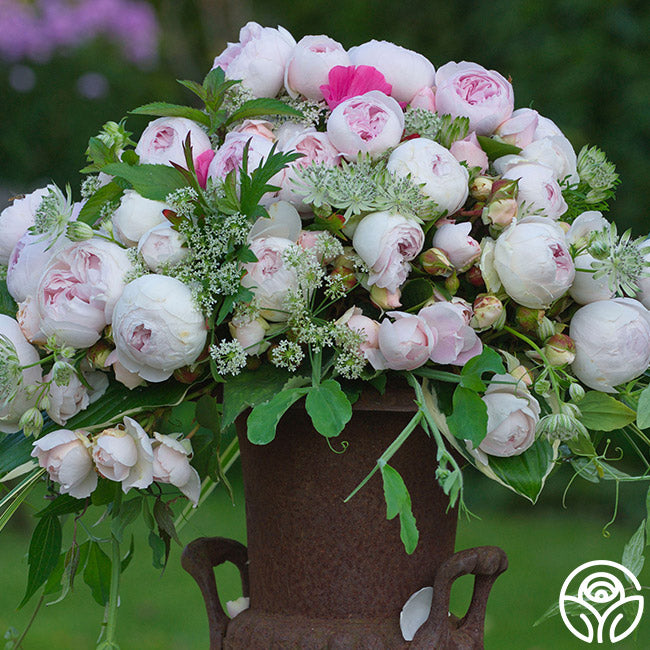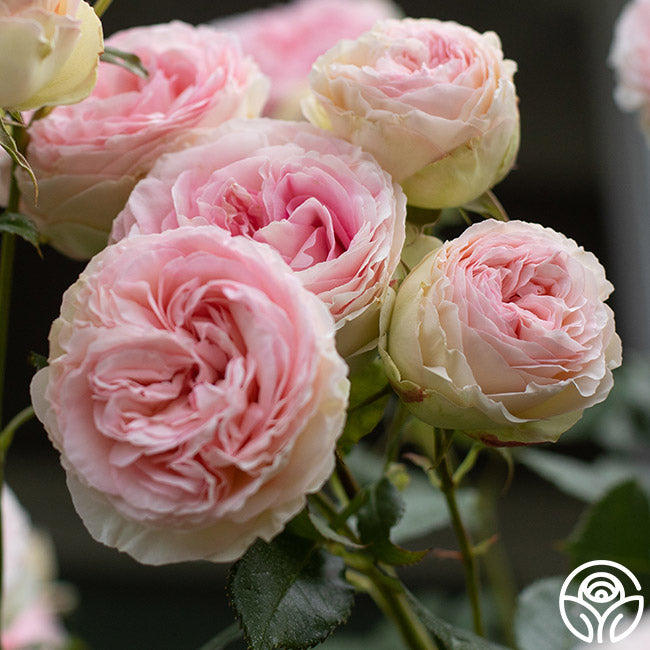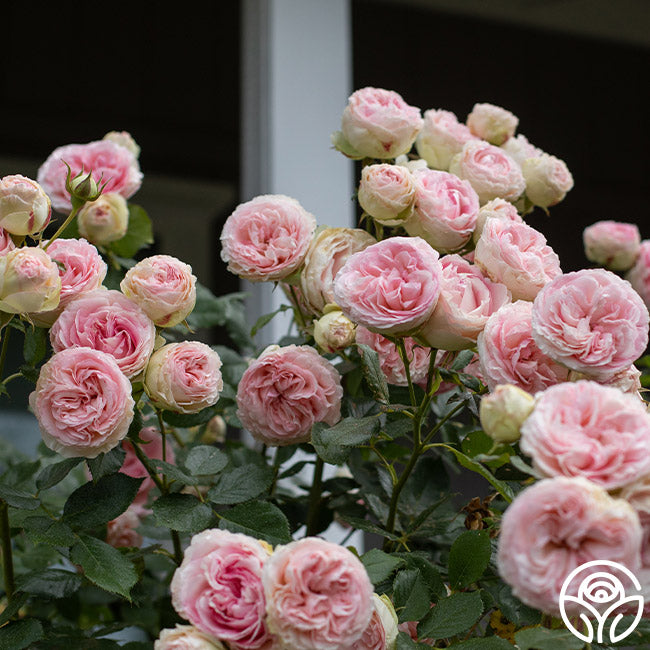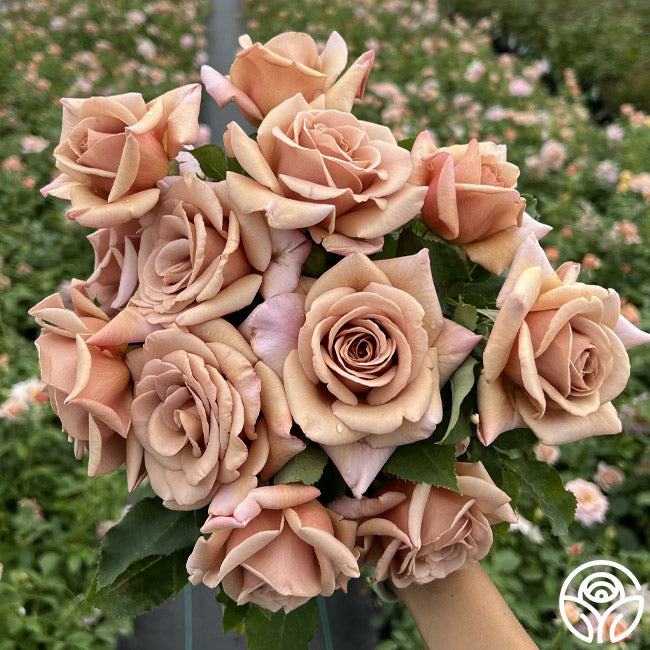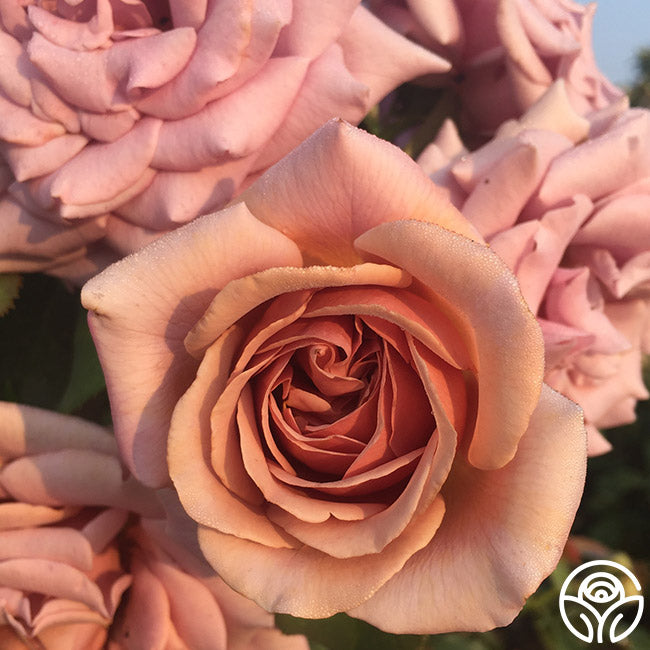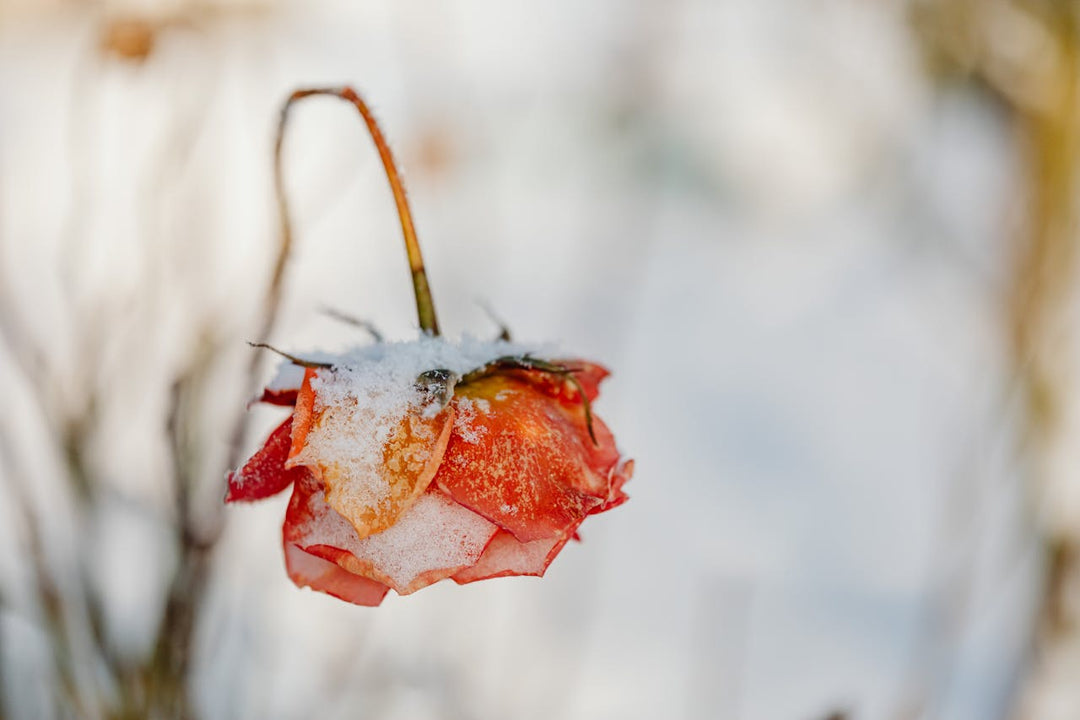Own-Root Roses
What are Own-Root Roses?
Own-root roses are roses grown from cuttings taken from stock plants. Unlike grafted roses, the roots of own-root roses are the same variety as their flowering tops.
Heirloom Roses does no budding or grafting at our nursery. Unlike the majority of rose growers in the US. we sell only own-root, virus-free roses. Our roses are first-year cuttings that are grown from a leaf cutting taken from a “mother” or “stock” plant. Own-root roses may be smaller when purchased, but quickly catch up to grafted roses (which are usually sold as two-year-old plants).
A Solution with Benefits
Growers initially began producing own root-roses as a response to the prevalence of Rose Mosaic Virus within the industry. This nasty virus was spread through grafting. Growers found that they could greatly reduce the spread of RMV if they used virus-free stock plants. Soon the industry discovered that roses grown on their own natural roots (and not those of another variety) had other advantages too:
- Own-root roses are hardier than grafted roses because their crown has not been weakened. The bud union of a grafted rose is vulnerable to cold and can be easily damaged during a hard winter.
- Own-root roses come back true to variety if frozen to the ground, because they have their own root system. Winter kill is less likely.
- Own-root roses are shapelier because they send up shoots from their own roots. This creates a fuller plant over time, which adds to increased vigor, bloom, and life expectancy.
- Own-root roses have no rootstock suckers, meaning more energy is sent to the main plant.


Stronger Plants for You
Some rose varieties produce more viable cuttings than others, making the process unpredictable (hence no special orders). Refined cutting techniques have enabled us to produce an inventory of over 100,000 roses, representing more than 1,500 varieties.
Most varieties grow rapidly their first year, though they seem smaller than their grafted counterparts. There is a saying with own-root roses:
The first year they sleep; the second year they creep; the third year they leap!
When an own-root rose is 3 years old, it will be identical in size to a grafted rose of the same age (if not sooner)
Some roses used as rootstock are:
| Fortuniana | Mainly used in warmer parts of the country. Fortuniana is very vigorous, does well in sandy soil, but is not hardy in extreme cold. It is tolerant to nematodes, which are pests that invade the roots and are common in Florida. |
|---|---|
| Manetti | A light pink Noisette used extensively at companies in California. Manetti has more flexible roots that do not break as easily as Dr. Huey. |
| Multiflora | Has a tendency to pick up salts and is not happy in alkaline soil. This particular rose is very susceptible to virus. |
| Dr. Huey | The most commonly used as rootstock. It has a long budding season. They store well when bare rooted and does well in all parts of the country. |
| De La Grifferaie | This rose is used for “standards” or “tree roses” as an inner stock between Dr. Huey and the grafted rose. |
| Odorata | A rose variety used often when the graft is done the same time the rooting of the plant takes place. It is very prone to sucker and crown gall. |
Q: Can a rootstock improve the disease resistance of a rose grafted onto it?
A: No, but it can improve the vigor.
Budding was the primary method of producing roses in the late 1800s. ‘La France,’ the first hybrid tea rose, had a beautiful bloom, but the plant was weak. By budding it onto rootstock, it took on more vigor and budding soon became the method of producing the modern rose.
Longer Life Expectancy
Own-root roses live longer than grafted roses. They will not out grow the bud union and need to be replaced after a number of years. Your own-root rose will thrive for as long as it is well cared for.
Own-root roses are not the best choice for instant gratification. However, vigor, hardiness, and the elimination of budding and grafting guarantees that the rose you selected, loved, and cared for will always be that same rose. If you live in a cold climate or have a rose that started off one color and is now another color (because the top died and the rootstock took over), give own-root roses a try. They are a superior product.




